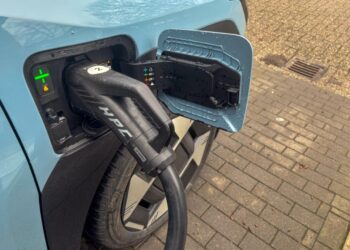In recent years, the concept of Mobility-as-a-Service (MaaS) has rapidly gained momentum as an innovative solution to urban transportation challenges. As cities around the world struggle with traffic congestion, pollution, and an ever-increasing demand for mobility, MaaS is emerging as a transformative force. By offering integrated, on-demand transportation options, MaaS is reshaping the way people move within cities, providing greater convenience, flexibility, and sustainability.
This article will delve into the concept of Mobility-as-a-Service, explore how it is transforming urban transportation systems, and discuss its benefits and challenges. We will also look at key players in the MaaS ecosystem and consider the future of urban mobility in a world where MaaS plays a central role.
A. What is Mobility-as-a-Service (MaaS)?
Mobility-as-a-Service refers to the integration of various transportation services into a single accessible and customer-friendly platform. Through this model, users can plan, book, and pay for multiple modes of transportation (such as buses, trains, car-sharing, ride-hailing, and bikes) all from one app or platform. The goal is to provide a seamless experience for users, eliminating the need for multiple apps or payment systems to navigate the transportation ecosystem.
A.1. Key Components of MaaS
The concept of MaaS is built upon several key components that work together to create a cohesive mobility experience:
-
Mobility Platforms: These are digital applications or platforms where users can access and book transportation services. They act as the central hub for MaaS, integrating various transport options into one interface.
-
Payment Integration: One of the key features of MaaS is its unified payment system, which allows users to pay for multiple services with a single transaction, whether it’s via subscription or pay-as-you-go models.
-
Data Sharing and Integration: The MaaS ecosystem relies on data sharing between different service providers to offer real-time information, such as availability, pricing, and schedules.
-
Variety of Transport Modes: MaaS integrates various transport modes, including public transit (bus, metro, tram), private options (ride-hailing, bike-sharing), and shared mobility solutions (scooter-sharing, car-sharing).
B. How MaaS is Transforming Urban Transportation
MaaS is fundamentally changing how people commute, travel, and think about mobility in cities. It offers a more efficient and sustainable alternative to traditional transportation systems by providing a broader range of mobility options, reducing reliance on private car ownership, and encouraging the use of more environmentally friendly transport modes.
B.1. The Decline of Private Car Ownership
One of the most significant shifts in urban transportation is the decreasing dependence on private car ownership. Urban centers have long struggled with traffic congestion, limited parking space, and pollution caused by high numbers of privately owned vehicles. MaaS is helping address these issues by offering alternatives to car ownership.
-
Reduced Congestion: By making shared mobility options more accessible and affordable, MaaS can reduce the number of cars on the road, thus easing traffic congestion and reducing pollution.
-
Cost Savings for Consumers: Many people find that using MaaS platforms to access a combination of public transport, car-sharing, and other services can be more cost-effective than owning a private car, particularly in dense urban environments where parking and maintenance costs are high.
B.2. Increased Use of Public Transportation
MaaS helps integrate public transportation into a broader mobility ecosystem, making it easier for users to incorporate it into their daily commutes. Public transportation becomes more attractive when combined with other modes of transport, such as on-demand ride services or bike-sharing, all available through a single platform.
-
Seamless Integration: MaaS platforms allow users to plan and book multi-modal journeys, including public transportation, in a way that is easy and efficient. This integration promotes the use of buses, trains, and other public transport options, reducing reliance on cars.
-
Real-Time Information: By offering real-time data on transit schedules, availability, and disruptions, MaaS platforms make public transport more reliable and user-friendly. This reduces the inconvenience often associated with traditional public transportation.
B.3. Promoting Sustainable Transport
MaaS encourages the use of eco-friendly transportation modes, contributing to more sustainable urban mobility. By integrating electric vehicles (EVs), bike-sharing, and other green transportation options, MaaS platforms offer sustainable alternatives to traditional gas-powered vehicles.
-
Reduction of Carbon Emissions: The promotion of electric vehicles and shared mobility options helps reduce carbon emissions in cities. MaaS can support the transition to cleaner transportation by incentivizing the use of low-emission transport options.
-
Encouraging Active Mobility: MaaS also promotes active transportation methods, such as walking and cycling, by incorporating bike-sharing and walking routes into its platform. These options contribute to healthier and more sustainable urban mobility.
C. Benefits of MaaS for Cities
The adoption of MaaS has numerous benefits for cities, including improved transportation efficiency, better environmental outcomes, and enhanced mobility options for residents.
C.1. Alleviating Traffic Congestion
By reducing the number of private vehicles on the road, MaaS platforms can help ease traffic congestion, which is a major issue in many urban areas. By integrating various transport modes, MaaS allows users to choose the most efficient and time-effective mode for their journey, reducing the need for cars.
-
Decreased Road Traffic: MaaS helps optimize the use of public transportation and shared mobility services, leading to fewer cars on the road, which helps alleviate congestion.
-
Improved Traffic Flow: The integration of real-time traffic data and predictive algorithms allows MaaS platforms to route users through less congested routes, improving overall traffic flow in cities.
C.2. Improving Air Quality
By encouraging the use of electric vehicles, shared mobility, and active transportation options, MaaS contributes to reducing air pollution and improving the overall air quality in cities.
-
Electric Vehicle Integration: MaaS platforms often prioritize electric cars, which produce zero tailpipe emissions, reducing air pollution in urban areas. This shift can have a significant impact on air quality in cities that suffer from high levels of pollution.
-
Reduction of Greenhouse Gas Emissions: The use of shared mobility services and the adoption of electric vehicles helps to reduce the overall carbon footprint of urban transportation, which contributes to climate change mitigation.
C.3. Enhanced Access to Transportation
MaaS provides increased accessibility to transportation services, particularly in underserved or rural areas. It can connect people who live in areas with limited public transport options to affordable and efficient mobility services.
-
Expanded Coverage: MaaS platforms can extend the reach of transportation networks to areas where public transit may not be as frequent or extensive. This creates new opportunities for people who rely on public transport but are outside major transit corridors.
-
Inclusive Mobility: By offering flexible, on-demand transportation services, MaaS platforms provide greater mobility options for people with disabilities, elderly individuals, and those with limited access to traditional transportation services.
D. Key Players in the MaaS Ecosystem
The MaaS ecosystem is made up of several key stakeholders, including transportation providers, technology companies, and government bodies. These players collaborate to create seamless, integrated transportation solutions that benefit users and contribute to more sustainable urban mobility.
D.1. Transportation Providers
Transportation providers, such as bus, metro, tram, and ride-hailing services, play a central role in the MaaS ecosystem. These providers integrate their services into MaaS platforms, offering users access to a variety of transport modes through a single interface.
-
Public Transit Operators: Public transportation agencies are critical to MaaS. By integrating their services with MaaS platforms, they can offer a more comprehensive and efficient mobility experience to users.
-
Private Mobility Providers: Ride-hailing services like Uber and Lyft, bike-sharing services like Lime and CitiBike, and car-sharing services like Zipcar also play a key role in the MaaS ecosystem by offering additional transportation options for users.
D.2. Technology Companies
Technology companies are the backbone of the MaaS ecosystem, developing the platforms that integrate various transportation services and provide users with real-time information and booking options. These companies are responsible for developing user-friendly apps and platforms that make MaaS accessible to the public.
-
Platform Developers: Companies that build and maintain MaaS platforms ensure the seamless integration of different transport modes, provide payment systems, and ensure that real-time data is accessible to users.
-
Data Providers: Real-time traffic, schedule, and availability data are essential for MaaS platforms to function effectively. Data providers ensure that platforms have the most up-to-date information to guide users in planning their trips.
D.3. Government and Regulatory Bodies
Government bodies play a crucial role in supporting and regulating MaaS. They create the policies and infrastructure needed to enable seamless integration of public and private transport systems, while also ensuring that MaaS services meet safety and regulatory standards.
-
Urban Mobility Planning: Governments are working to create urban mobility plans that incorporate MaaS, ensuring that transportation systems are integrated and efficient. They also invest in the infrastructure required for electric vehicles and other green transportation options.
-
Regulatory Frameworks: Governments are also developing the regulatory frameworks that govern MaaS services, such as data-sharing regulations, pricing structures, and environmental standards for transportation.
E. Challenges of MaaS Implementation
While MaaS offers numerous benefits, its implementation also faces challenges that must be addressed to ensure the success of the model.
E.1. Integration of Diverse Transport Systems
One of the primary challenges of MaaS is the integration of diverse transportation modes and systems. Different service providers have their own technological platforms, pricing structures, and operating procedures, which can make it difficult to create a truly seamless experience for users.
-
Interoperability: MaaS platforms need to ensure that all transport providers can work together, regardless of their technological infrastructure. This requires standardization and collaboration among various stakeholders.
- Data Privacy and Security: The integration of multiple data streams raises concerns about user privacy and data security. MaaS platforms must comply with privacy laws and ensure that user data is protected.
-
-
User Education: MaaS platforms must focus on educating users about the benefits and availability of the service. This involves explaining how the platform works, the different transport options available, and the convenience of the integrated services.
-
Building Trust: MaaS platforms need to build consumer trust, ensuring that users feel confident in using the platform for all their mobility needs.
E.2. Consumer Adoption and Awareness
For MaaS to be successful, consumers need to be aware of the available services and be willing to adopt new ways of commuting. Changing transportation habits can be difficult, particularly in cities with a strong culture of car ownership.
Mobility-as-a-Service is a transformative model that is reshaping urban transportation by offering integrated, on-demand, and sustainable mobility solutions. By reducing congestion, promoting the use of public transport, and encouraging environmentally friendly options, MaaS is helping cities become more sustainable, efficient, and accessible. While there are challenges in terms of integration and consumer adoption, the potential benefits of MaaS are vast, and it is clear that this innovative model is here to stay. As technology continues to evolve, the future of urban transportation will likely revolve around MaaS, creating a smarter, greener, and more connected world.
-















